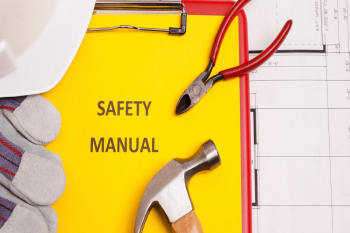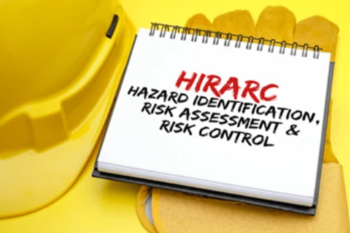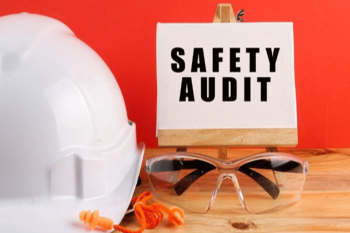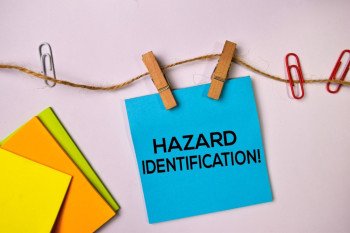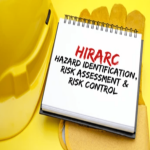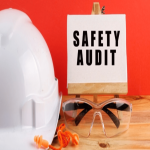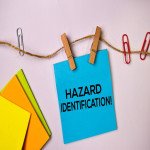FAQ- FIRE PROTECTION AND SAFETY DESIGN (FPSD) STUDY
Q1. What is Fire Protection and Safety Design (FPSD)?
A1. The meaning of FPSD is as follows:
Fire Protection and Safety Design (FPSD) is a comprehensive approach to minimizing the risk of fires and ensuring the safety of people and property within buildings and structures. It encompasses a range of measures aimed at prevention, detection, suppression, and evacuation in the event of a fire emergency.
Q2. What is the Objective of FPSD?
A2. The objective of FPSD is as follows:
The objective of fire protection and safety design (FPSD) is to prevent fires, detect them early, suppress them effectively, facilitate safe evacuation, ensure structural integrity, and comply with fire safety regulations to protect lives and property in the event of a fire emergency.
Q3. Why is FPSD important?
A3. Following point highlights the importance of FPSD
FPSD is important for safeguarding lives and property in the event of a fire emergency. It helps to minimize the risk of fire-related incidents, enhance the effectiveness of emergency response efforts, and promote a safe built environment.
Q4. What reference is commonly used for FPSD Study Guideline?
A4. The commonly used reference for FPSD study is as follows:
NFPA-11- for design, installation, operation, testing and maintenance of low, medium & High expansion foam system for fire protection.
NFPA-25- is standard for the inspection, testing, and maintenance of water based fire protection system.
NFPA-10- Provides requirements to ensure that portable fire extinguishers will work as intended to provide a first line of defense against fire.
NFPA-13-addresses sprinkler system design approaches, system installation, and component options to prevent fire deaths and property loss.
NFPA-17-This standard includes the minimum requirements to ensure that dry chemical fire extinguishing systems will function as intended throughout their life to protect life and property from fire.
NFPA-20- protects life and property by providing requirements for the selection and installation of pumps to ensure that systems will work as intended to deliver adequate and reliable water supplies in a fire emergency.
NFPA-22- Provides requirements for the design, construction, installation, and maintenance of tanks and accessory equipment that supply water for private fire protection.
NFPA-72- Provides the latest safety provisions to meet society's changing fire detection, signaling, and emergency communications demands. In addition to the core focus on fire alarm systems, the Code includes requirements for mass notification systems used for weather emergencies; terrorist events; biological, chemical, and nuclear emergencies; and other threats.
Q5. Who is responsible for implementing FPSD measures?
A5. Following personnels are responsible for implementing FPSD measures:
The responsibility for implementing FPSD measures typically falls on building owners, facility managers, architects, engineers, fire safety professionals, and regulatory authorities, who work together to ensure compliance with fire safety codes and standards.
Q6. Which software will be used for the FPSD study?
A6. Following software is used for the FPSD study:
AutoCAD
Q7. What is the methodology for FPSD?
A7. The methodology for HAC Study is as follows:
To design Foam System as per NFPA-11
To design the fire hydrant system as per NFPA-25
To design the portable fire extinguisher as per NFPA-10
To design the sprinkler system as per NFPA-13
To design Dry Chemical Extinguishing Systems for dry chemical systems as per NFPA-17
For Installation of Stationary Pumps for Fire Protection as per NFPA-20
To design Water Tanks for Fire Protection as per NFPA-22
To prepare plant layout evaluation report as per NBC-2005 Rev.2
To prepare life safety report as per NFPA-101 Eleventh Edition
To design fire alarm system report as per NFPA-72
To prepare fire & Gas detection system as per NFPA-72
Q8. What is the systematic approach for conducting FIRE PROTECTION AND SAFETY DESIGN (FPSD)?
A8. Following approach is used for conducting FPSD:
Risk Assessment: Conduct a thorough assessment of fire risks within the building or facility, considering factors such as occupancy type, building layout, fire load, hazardous materials, and proximity to other structures.
Regulatory Compliance: Ensure compliance with local fire safety codes, standards, and regulations applicable to the building's location and occupancy type, including requirements for fire protection systems, building construction, and evacuation planning.
Design and Planning: Develop a comprehensive FPSD plan tailored to the specific needs and characteristics of the building, incorporating measures for fire prevention, detection, suppression, evacuation, and structural integrity.
Fire Prevention: Implement measures to minimize the risk of fires, such as proper storage and handling of flammable materials, fire-resistant construction materials, and fire safety training for occupants.
Fire Detection: Install fire detection systems like smoke alarms, heat sensors, and flame detectors to quickly identify the presence of a fire and alert occupants to take appropriate action.
Fire Suppression: Design and install fire suppression systems such as sprinklers, fire extinguishers, and fire blankets to control or extinguish fires before they can spread and cause extensive damage.
Evacuation Planning: Develop clear evacuation routes, emergency exits, and signage to facilitate the safe and efficient evacuation of occupants during a fire emergency, considering factors such as occupant load, mobility impairments, and alternative egress options.
Structural Protection: Ensure that buildings are constructed with fire-resistant materials and designed to maintain structural integrity during a fire, providing occupants with a safe refuge until emergency responders arrive.
Training and Education: Provide fire safety training and education for building occupants and staff on fire prevention strategies, emergency response procedures, and evacuation protocols.
Testing and Maintenance: Regularly test and maintain fire protection systems, conduct fire drills and evacuation exercises, and review and update the FPSD plan as needed to ensure its effectiveness over time.
Q9. What are the documents required for the FPSD Study?
A9. The documents required for FPSD Study includes:
Building Plans and Layouts:
Occupancy Information
Fire Protection Systems
Hazardous Materials Inventory:
Building Construction Materials
Local Fire Codes and Regulations
Historical Fire Incident Data
Emergency Response Plans
Risk Assessment
Accessibility Information
Q10. What are the different types of fire protection systems used in FPSD?
A10. Fire protection Systems used in FPSD are as follows:
Common types of fire protection systems include fire alarms, sprinkler systems, fire extinguishers, fire blankets, smoke control systems, and emergency lighting.
Q11. What are documents deliverables for FPSD?
A11. The documents deliverables for FPSD Study are as follows:
·Executive Summary
Document Review
FPSD Methodology
Fire Safety Plan
Fire Protection System Design Drawings
Building Modification Recommendations
Evacuation Plan
Compliance Documentation
Training Materials
Emergency Response Coordination Plan
Post-Incident Evaluation Reports
Comments Resolution sheets
Reference
List of tables
List of appendix
Q12. What training is required for occupants and staff regarding FPSD?
A12. Training required for occupants and staff regarding FPSD is as follows:
Occupants and staff should receive training on fire prevention, emergency procedures, evacuation routes, and the proper use of fire protection equipment such as fire extinguishers. Training should be conducted regularly and tailored to the specific needs and characteristics of the building or facility.
Q13. What role do fire safety professionals play in FPSD?
A13. Fire Safety Professionals play crucial role in FPSD in following ways:
Fire safety professionals, including fire engineers, fire protection engineers, and certified fire protection specialists, play a critical role in assessing fire risks, designing fire protection systems, developing emergency plans, conducting training, and ensuring compliance with FPSD regulations.
Q14. What information does the executive summary of a FPSD Report typically include?
A14. Executive summary of a FPSD Report typically include the following:
The executive summary of a Fire Protection and Safety Design (FPSD) Report provides an overview of the key findings, recommendations, and conclusions of the report.
It typically includes:
Introduction: A brief introduction to the purpose and scope of the FPSD report, including the building or facility under evaluation and any relevant background information.
Methodology: Summary of the methodology used to conduct the FPSD assessment, including the approach to risk assessment, data collection, analysis, and evaluation of fire protection systems.
Key Findings: Summary of the main findings and observations from the FPSD assessment, highlighting significant fire risks, deficiencies in fire protection measures, and areas for improvement.
Recommendations: Specific recommendations for addressing identified fire risks and enhancing fire protection measures, including suggestions for preventive measures, detection systems, suppression systems, evacuation planning, and structural protection.
Conclusion: Concludes with a summary of the overall importance of fire safety, the significance of the findings, and the urgency of implementing recommended measures. and any next steps
Q15. What is the Comment Resolution Sheet?
A15. The meaning of Comment Resolution Sheet (CRS) is as follows:
A comment resolution sheet is a document used to track and address comments, feedback, or issues raised during a review process, audit, or evaluation.
DISCLAIMER
This Blog is provided solely for informational and educational purposes. It is advisable to verify all information presented and consult with appropriate experts or professionals before making any decisions or implementing any strategies based on the content of this blog. HSE Risk Management Services Pvt. Ltd. accept no liability for any actions taken or not taken based on the information provided herein.

